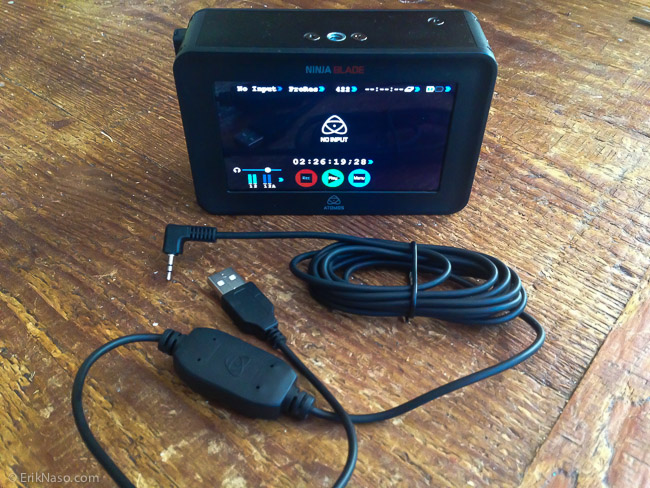Datacolor SpyderHD Color Calibration Now For Video Monitors Too.
I’ve been looking for a product that would get my HD television, field monitors and reference monitors in my edit bay to all be calibrated. Well now it looks like it’s no longer a dream. I have the new Datacolor SpyderHD in house for a hands on review and I’m pretty excited to dive in. For the longest time we had to use a very expensive broadcast monitor to get accurate color for post production color grading. Heck how about just basic color correction. It’s impossible to do it right if you don’t have a monitor that is accurate. This system and the right HD television could solve this issue.

Datacolor SpyderHD comes in a very nice metal kit with laser cut foam loaded with the tools you need.
This is going to take a little time to complete due to a whole lot of stuff going on at the moment but I just wanted to share the news on this product and what it can do and will update this post with the full review. Here is what the SpyderHD can do for us.
So you see it really is all about a faster and more accurate workflow. If you use multiple cameras at a shoot like a DSLR and a BlackMagic camera. With the tools provided shoot the Spydercheckr target with gray card showing and set white balance. Set in-camera exposure and ISO as well to match the other cameras.
Makes post processing much easier if your cameras match. I like that idea right? All cameras won’t match image wise. Some will have more contrast while others may have a log profile but if you get the color balance right then the grade should go much faster.
Another thing to remember is white balancing with 18% gray is crucial for a correct white balance. Not using a white card. For so many years when I shot broadcast news I Balanced on reporter’s notes and even my white running shoes! Sure it looks right but it’s not accurate compared to 18% grey. Not all gray cards are created equal either. The Datacolor 19% grey is spot on giving perfect balance.
Now I’m more of a video guy and the features that interest me the most are those that allow me to calibrate HD displays, but it is also great to be able to get all your computer displays tuned to perfection too and the SpyderHD can do it. For pre production the Spydercheckr and Spydercube are very power tools. Take a few shots with them and use them in post to get perfectly balanced images. It’s important to note that not all HD displays can be calibrated.
The television or HD reference monitor has to have certain user settings that can be changed.
- Brightness
- Contrast
- Color
- Tint
- Whitepoint Preset
- Sharpness
If your HD TV monitor has these settings available to manipulate you are good to go.
Here are some of the features.
- Provides integrated calibration from capture, to edit, to final format.
- The first application to offer calibration functions for computer displays, video reference displays, and TVs in a single application, simplifying across-the-board color control.
- Calibrate LED, OLED, LCD and CRT computer displays, laptops and front projectors with Spyder4elite hd, for accurate color on all displays.
- Tune video reference displays and adjustable field displays to video standards with Spyder4elite hd, for accurate color from preview, to post-process, to final presentation.
- Capture scene white balance and exposure data anywhere with Spydercube, to provide accurate data for RAW image and video editing.
- Match and custom calibrate camera color with the Spydercheckr Color Target, for accurate and similar color from all your camera systems.
- Set in-camera white balance, exposure and ISO with the Spydercheckr Gray Target to get it right in camera, especially for DSLR video.
Here is what you get.
- Spyder®4elite hd and desktop cradle with tripod mount
- Spyderweb
- Spydercube® with storage pouch
- Spydercheckr®
- Software CD including new integrated display calibration application
- DVD and BluRay Test Pattern Discs
- Screen Cleaner
- Quick Start Guides and Warranty Card
An added benefit is I can use the SpyderHD to calibrate the Atomos Ninja Blade monitor as well. I had to purchase a special cable that has a LANC and USB connector. The Datacolor Atomos Spyder gives the Ninja Blade one button color calibration normally only found on high end monitors. With Spyder, the Ninja Blade gains the ability to accurately calibrate to the SMPTE Rec 709 color space with a D65 white point with 100% gamut.
The Ninja Blade is a very nice ProRes or DNxHD recorder with a fantastic 1280 x 720 5” SuperAtom IPS touchscreen. Now I can get accurate color when shooting with my C100 or any camera that has an HDMI output.
Looks like the whole house will be in perfect color! The first step for me is to make sure my HD televisions have the requirements needed to be calibrated and then the work begins. This kit offers so many tools for getting the best color from out in the field to setting up a proper display so you can then edit and grade with confidence.
That’s the overview. Next up will be a full hands on review.
Follow me on Twitter @eriknaso and check out my page on Facebook.
Thanks for coming by! Please help support my site by using the links on this page or bookmark these from my favorite retailers, B&H, Adorama, Zacuto, Amazon.com & Think Tank Photo. Using the links cost you nothing extra, but it helps offset the cost of running my blog. Thanks again for coming by eriknaso.com!
Filed in: Atomos • C100 • Featured Post • New Release • Post Production • Video Editing











Hi Erik,
Why is it that you recommend using a grey card to set white balance rather than a dedicated white balance card? I have a Lastolite balance card with 18% grey for exposure on one side and white for white balance on the other. Would I be better off white balancing on the grey side?
Yes. White isn’t neutral. Grey is. I highly recommend it. Always shoot the grey card in new scenes for easy color correction in post. Experiment with white balancing by using both white and gray and see what the results are.
Hi Erik,
Great article. What did you have to do calibrate the Atomos Ninja Blade?
I have been looking at purchasing the Atomos Spyder, but I would also like to calibrate my laptop and desktop(OS X).
It sounds like you were able to use the Spyder®4elite software with a purchase Lanc cable. Where did you buy it?
Thanks in advance for the feedback. I have been looking all over(including contacting Atomos and Datacolor) for guidance.
Cheers,
Bryan
Markertech has the cable you need for the Spyder if you already have Spyder®4elite
Thanks, Erik.
Have you finished calibrating your computer displays, monitors and/or TVs? How did that go and are you now confident all these devices are REC709 correct on your edit system. Confidence it’s all correct is key to any system. I’m really interested in this buying this system but worried it won’t actually work as advertised for video production and post.
Please add a short post about your real world results after a shoot/edit/grade.
Thanks,
Keith
I can tell you that the monitors I did calibrate are far more accurate now than they were. It’s very important to have the settings available on the TV or monitor that you want to calibrate. If you dont then it’s harder. As for computer displays it works great. Having the chart for field use in invaluable for post work.
Thanks for the helpful info. I do own and routinely shoot a basic DSC Labs Hawk QCC chart along with the slate but tend to only occasionally shoot a Macbeth or ChromaDuMonde as well. That’s mostly because the latter color charts are insanely expensive(usually DIT owned) and I’ve also noticed editors and colorists don’t want to go find a chart at the head of scenes/shots anymore even when they know it’s there. I’m guessing the Spydr reference tools will likely only be used on jobs I both shoot and edit. How often do you actually pull out and shoot the Spydercube and Spydercheckr on your promo and commercial work?
Keith
Since I bought it I use it. Before I always shot the grey card just for white balance reference and go from their. Saved me several times, but I edit my own projects so I like to make my life simple. I would say if you do anything just having the grey card in each lighting situation would be a good idea. After all you need to get a white balance anyway so might as well just roll on it for a few seconds.
For multi-cam shoots this is a big time saver. All the cameras recording the chart of just a grey card will make matching in post go a lot faster.
As a side note, I use a DSC Hawk QCC chart on virtually every new scene except when too run & gun to be reasonable. Use velcro to attach it to the back on the slate when it’s in use. Otherwise it stays in it’s cover in the camera case lid or a backpack.
This card is considerably more useful than an 18% grey card only and not that expensive. It’s also a lot more tolerant of field abuse than a cardboard grey card. Take a look and maybe add this to your affiliate links.
http://www.bhphotovideo.com/c/product/765245-REG/DSC_Labs_FBH_Hawk_QCC_FrontBox_Chart_HD.html
I will definitely use your link if I decide to buy the SpyderHD system. Thanks again for the owner/user insight.
Keith